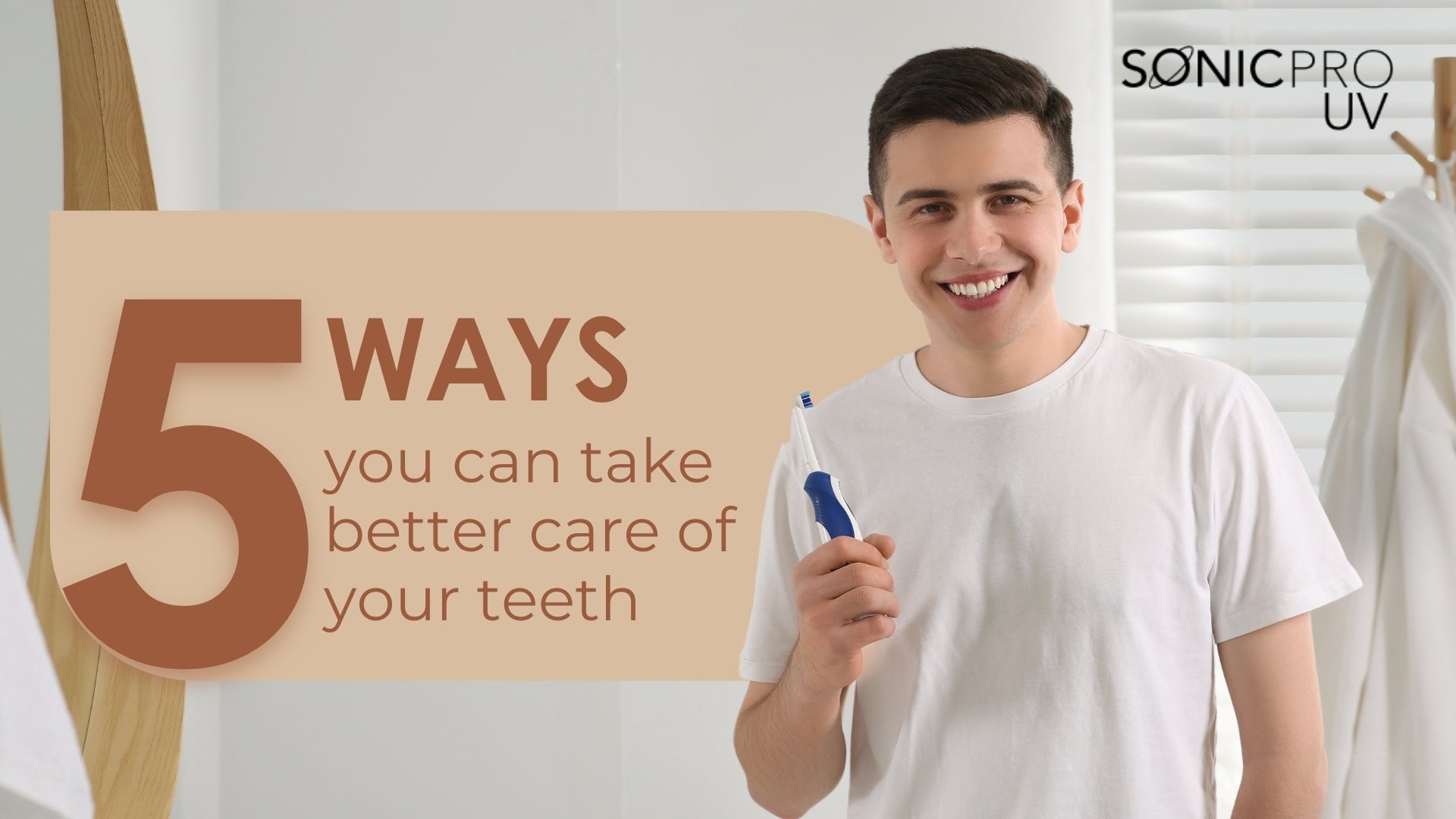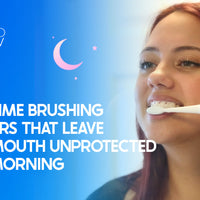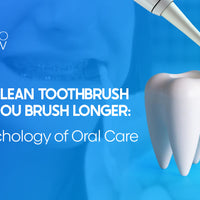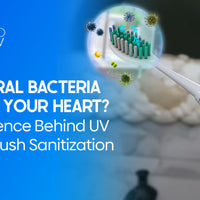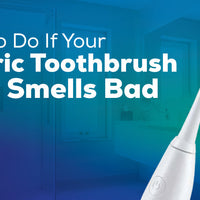Summary
-
Oral health is vital to your health, as it helps avoid complications such as bad breath and gum disease.
-
To enhance your dental health, you can make five simple, regular habits part of your daily life.
-
Know the correct angle technique of 45 degrees in brushing and the importance of flossing.
-
An enamel-strengthening diet high in calcium and water is tooth-friendly.
-
Professional cleaning should be done regularly to identify issues early and eliminate tartar.
We've been told to brush our teeth since we were children. But here's the honest question: Is that one habit really enough to ensure good oral health? Probably not. While brushing is a crucial first step, achieving a truly healthy smile and strong gums takes a bit more consistency and care.
If you're looking for simple, convenient ways to upgrade your oral health routine, you're in the right place. These five easy steps can make a noticeable difference in the brightness of your smile as well as your overall health.
Remember: consistency is key to long-term results!
Do you know how to brush your teeth properly?
Oral care starts with brushing, and it is not enough to rub toothpaste around your mouth. The real secret to a thorough plaque removal lies in technique.
-
Use the Right Tools: Always use a soft-bristled toothbrush and fluoride toothpaste. Soft bristles clean effectively without damaging your enamel or irritating your gums, while fluoride strengthens your teeth against decay.
-
Angle: Hold your toothbrush at 45-degree angle to the gumline. Clean every tooth surface with short, gentle strokes. This allows the bristles to reach just under the gumline, where plaque tends to build up.
-
Two Minutes, Twice a Day: Brush for a minimum of two minutes, with a focus of 30 seconds on every quadrant of your mouth.
-
Don’t Forget the Tongue: The tongue is a major source of bacteria that causes bad breath. Lightly brush the surface of your tongue every time you brush your teeth. It’s quick, easy, and helps keep your breath fresh.
-
Change your toothbrush: Replace the head of your electric toothbrush every 3 to 4 months, or sooner if the bristles are frayed. Worn-out bristles don't clean properly.
Electric toothbrushes, like the SonicPro UV, can effortlessly improve your brushing technique. Many come with built-in timers and pressure sensors, guiding you to brush the way dentists recommend.
1. Brush Your Teeth Properly
Brushing may seem straightforward, but doing it the right way makes all the difference. Start by choosing a soft-bristled toothbrush paired with a fluoride toothpaste. Soft bristles are gentle on your gums and enamel while still removing plaque effectively.
When brushing, angle the brush at 45 degrees toward your gumline. This angle helps the bristles sweep away plaque at the spot where your teeth and gums meet, which is a key area that bacteria love to hide. Be sure to brush all surfaces of your teeth, including the front, back, and chewing surfaces. Many people forget the tongue, but brushing your tongue helps eliminate odor-causing bacteria and leaves your mouth fresher.
Another important step is to replace your toothbrush or brush head every three to four months. Worn bristles lose their effectiveness and can even irritate your gums. If you notice fraying before the three-month mark, it’s a sign you might be brushing too hard.
For even better results, consider using an SonicPro UV electric toothbrush. Electric brushes are designed to clean more thoroughly by delivering thousands of strokes per minute, while also regulating pressure so you don’t damage your enamel or gums.
2. Why should you never skip flossing?
Your traditional toothbrush isn’t designed to clean the tight spaces between your teeth. That’s where plaque and food debris build up first, and it’s exactly where cavities and gum irritation often begin. Ignoring those areas gives bacteria a free pass.
Fortunately, flossing removes what brushing can’t, and doing it consistently helps stop small problems before they turn into dental visits you’d rather avoid.
And it definitely doesn’t need to be complicated. Whether you use floss picks or traditional floss, choose the tool that works best for you. What matters is daily use, not the method.
You can floss before or after brushing, whichever fits your routine better. This small step is one of the most effective ways to protect oral health.
3. Are you using the right products to protect your enamel?
The products you use are your everyday barrier against time and decay. Ensuring you apply the right ones to protect yourself is vital in the long run.
-
Fluoride is your enamel best friend: Fluoride is a natural mineral that not only strengthens tooth enamel but also prevents decay. This is why the American Dental Association (ADA) advises the use of fluoride toothpaste.
-
Mouthwash is not a substitute: It helps wipe out bacteria and freshen breath, but it does not replace brushing and flossing. Use it as an additional measure, but do not count on it to eliminate plaque.
-
Electric toothbrush: Your brush isn’t as clean as you think. But SonicPro UV uses a built-in UV light to kill bacteria left on your brush after use. Place it in the holder; it sanitizes automatically, so your brush stays clean between uses. No germ transfer, just better hygiene.
Want to know if electric self-sanitizing toothbrushes are really worth it? Here’s a quick breakdown to help you decide.
4. How does your diet affect your teeth?
We all enjoy a sweet treat or a fizzy drink now and then but it’s important to understand how these choices affect your teeth. What you eat matters, because your teeth notice.
-
Limit Sugar and Acid: Sugary and acidic drinks like sodas and concentrated juices feed cavity-causing bacteria and erode your enamel over time. Cutting back makes a big difference.
-
Choose Tooth-Friendly Foods: Opt for calcium-rich foods like dairy products and vitamin D sources to strengthen your teeth and bones. Crunchy fruits and vegetables, apples and carrots, act as natural scrubbers, helping clean your teeth as you chew.
-
Stay Hydrated: Water is your best ally. It rinses away food particles, supports saliva flow, and keeps your mouth fresh. After enjoying something sweet or acidic, rinsing with water can help minimize damage.
5. Are you visiting your dentist regularly?
You may believe you are doing everything right at home, but a dentist can see what you may not. Check-ups also help detect issues at an early stage, be it a small hole or early gum disease.
-
Professional Cleanings: Dentists and hygienists eliminate tartar, which is hardened plaque that cannot be removed by brushing and flossing.
-
Early Detection: Consistency in check-ups (which is suggested to be every six months) will enable your dentist to identify issues early enough. It’s far better to catch a small cavity early than to face a major dental problem down the line
Your dentist may give you tailored recommendations depending on your oral health history and habits, making your routine as effective as possible.

Additional Tips for Better Oral Health
There are a few more small but powerful habits that can make a noticeable difference.
Avoid Tobacco: Smoking and chewing tobacco increase the risk of gum disease, tooth loss, and oral cancer, along with causing stubborn stains.
Consider an Electric Toothbrush: Studies show electric toothbrushes are more effective at reducing plaque and gingivitis compared to manual brushing. Tools like SonicPro UV even come with sanitizing technology that keeps your brush cleaner between uses.
Chew Sugar-free Gum: Chewing gum stimulates saliva flow, which helps wash away food particles and neutralize acids. Look for gum that contains xylitol, a natural sweetener that may reduce cavity-causing bacteria.
These extra steps are easy to integrate into your lifestyle and provide long-term protection for your oral health.
Final Verdict
Good oral hygiene isn’t rocket science, but a matter of consistency. These five simple habits: brushing properly, flossing daily, minding your diet, using the right products, and visiting your dentist are the foundation of a healthy, brilliant smile.
Small, consistent efforts every day lead to long-term dental health. But the good news is: if you are using a quality tool like the SonicPro UV, you are already ahead of the game!
And that’s it! Start implementing these tips today for a healthier smile, and if it’s been a while, schedule that dental check-up!

